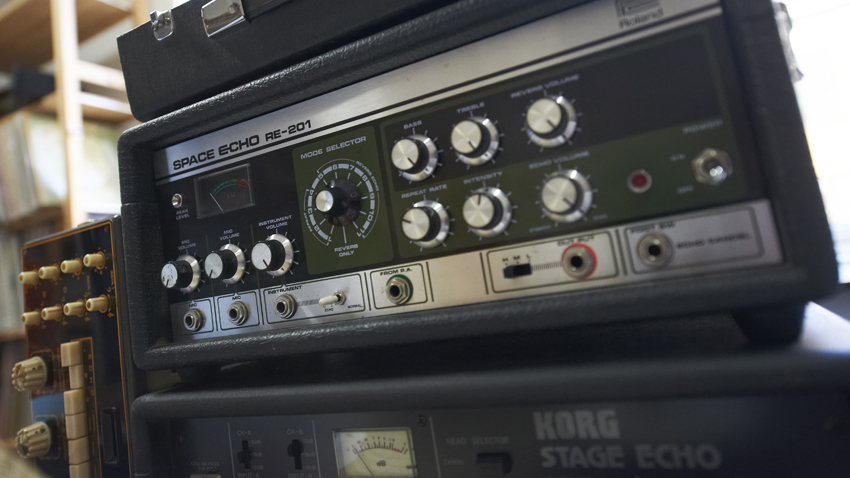In praise of: Roland Space Echo
Get lost in space

It was genius guitarist and inventor Les Paul who first began experimenting with tape delay, using technology developed in Germany during World War II.
By the mid 50s, Les had used the effect on a string of hit records. At that point, it also became the signature sound of rockabilly thanks to the slapback echo on Elvis Presley and Carl Perkins´ records cut at Sam Phillips´ Sun Studio in Memphis, Tennessee.
Commercially produced echo units had been available since the 50s (the WEM Copicat was a big seller in the UK in the 60s), but none were as advanced as the Roland Space Echo range, launched in 1973.
Built into a robust wooden case, the Space Echo offered more control over its effects than any of its forebears. The first models, the RE-100 and RE-200, were succeeded the following year by the RE-101 and the model that tone junkies now consider the pick of the litter, the RE-201.
The RE-201 is the echo box that rockabilly king and ex-Stray Cat Brian Setzer relies on for his Sun Records-style slapback - check out Setzer playing Sleepwalk on YouTube for the ultimate RE-201-fuelled performance.
It´s also the unit that Radiohead guitarist Jonny Greenwood insists on for his aural experiments, and it´s the sound of classic dub reggae cuts by legends such as King Tubby and Lee ‘Scratch´ Perry.
To make the RE-201 and other Space Echo models work, a loop of tape is drawn across a series of record and playback heads by an internal motor. The input sound - a guitar lick, for example - is captured on tape by the recording heads.
Get the MusicRadar Newsletter
Want all the hottest music and gear news, reviews, deals, features and more, direct to your inbox? Sign up here.
The sound is then reproduced by the playback heads before it´s wiped by the recording head again. The rate at which the tape is drawn across the playback heads determines the speed of delay. It´s actually far simpler than we´re making it sound.
By the late 80s, many musicians had abandoned analogue gear in favour of digital. The first digital Space Echo, the RE-3, debuted in 1988. In 2007, Roland released the Boss RE-20 Space Echo Twin Pedal. As excellent as the latter unit undoubtedly is, it can never quite match the legendary tone and warmth of the highly prized original. Now, that´s something that´s worth repeating.
ROLAND SPACE ECHO TIMELINE
1973
The first Space Echo models are introduced
1974
The iconic RE-201 Space Echo is unveiled
1990
Roland ceases production of all Space Echo models
2007
The RE-201 is reincarnated as the Boss RE-20 Twin Pedal
Total Guitar is Europe's best-selling guitar magazine.
Every month we feature interviews with the biggest names and hottest new acts in guitar land, plus Guest Lessons from the stars.
Finally, our Rocked & Rated section is the place to go for reviews, round-ups and help setting up your guitars and gear.
Subscribe: http://bit.ly/totalguitar
“Its mission is simple: unleash the power of any amplifier or line-level source without compromise”: Two Notes promises a “watershed” in tube amp control with the Torpedo Reload II
MusicRadar deals of the week: Enjoy a mind-blowing $600 off a full-fat Gibson Les Paul, £500 off Kirk Hammett's Epiphone Greeny, and so much more












